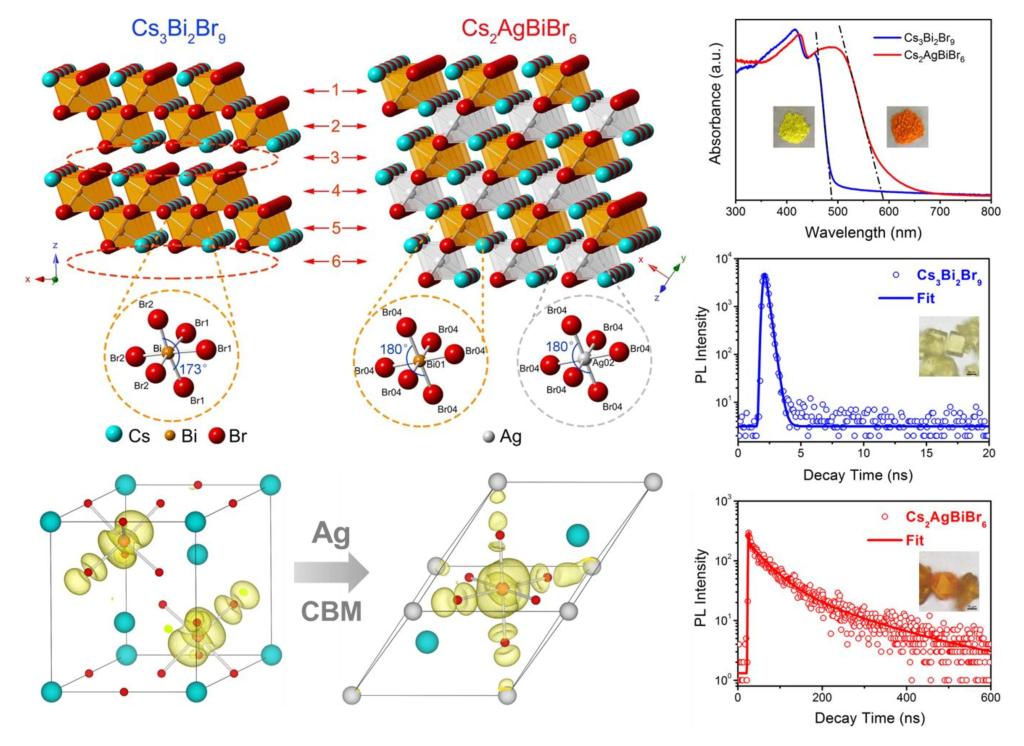Research groups led by Prof. Can Li and Prof. Rengui Li from the Dalian Institute of Chemical Physics (DICP) of the Chinese Academy of Sciences (CAS) achieved new advances in the study of the structural modulation and photoelectric properties of perovskite materials. They revealed that the elimination of octahedral distortion within the all-inorganic lead-free halide perovskite significantly reduced the localization of electron-hole pairs, greatly enhanced the separation and transport of photogenerated charges, and exhibited excellent photoelectric properties.

The metal halide perovskites have triggered great interests due to their unique properties such as high optical absorption coefcient, low exciton binding energy, high carrier mobility, and long electron-hole diffusion lengths, which has made them applicable in various optical and electronic fields. However, why perovskite-structured materials exhibit excellent photoelectric properties and how the unique crystalline structures affect the charge separation and transport properties are still not well elucidated, which also limits the further development of highly efficient perovskite photoelectric material systems.
In this work, taking inorganic halide perovskite Cs3Bi2Br9 as a prototype, through theoretical calculations and experiments, the researchers found that the distortion of the BiBr6 octahedral structure in Cs3Bi2Br9 makes the excited electron-hole pairs strongly localized at the center of Bi, thereby causing a large exciton binding energy, which hinders the separation and transport of photogenerated charges. Furthermore, by introducing Ag atoms into the structure to replace part of Bi atoms, the double perovskite Cs2AgBiBr6 is formed, and Ag occupies the original vacancy, eliminating the structural distortion of the octahedron, greatly reducing the strong localization of the electron-hole pairs, which makes the electron distribution in the conduction band and valence band more dispersed. Therefore, compared to Cs3Bi2Br9, Cs2AgBiBr6 exhibits smaller exciton binding energy, lower effective carrier mass, and higher carrier mobility and effective lifetime, which greatly improves the separation and transport of photogenerated charges. The researchers further used the photocatalytic hydrogen production reaction under visible light as a probe reaction and found that the modulation of the perovskite microstructure increased the photocatalytic hydrogen production activity by more than two orders of magnitude, further verifying the important effect of perovskite structure modulation on photogenerated charge separation and transport properties. This research work is of great significance for in-depth understanding of the essential relationship between the microstructure of perovskite semiconductors and their photoelectric properties, as well as the rational design of new perovskite material systems in photoelectric fields.
Related research results were published online in Advanced Materials. This work was financially supported by the National Natural Science Foundation of China, the Strategic Priority Research Program of Chinese Academy of Science and LiaoNing Revitalization Talents Program.
(Text/Image by Ming Shi and Rengui Li)